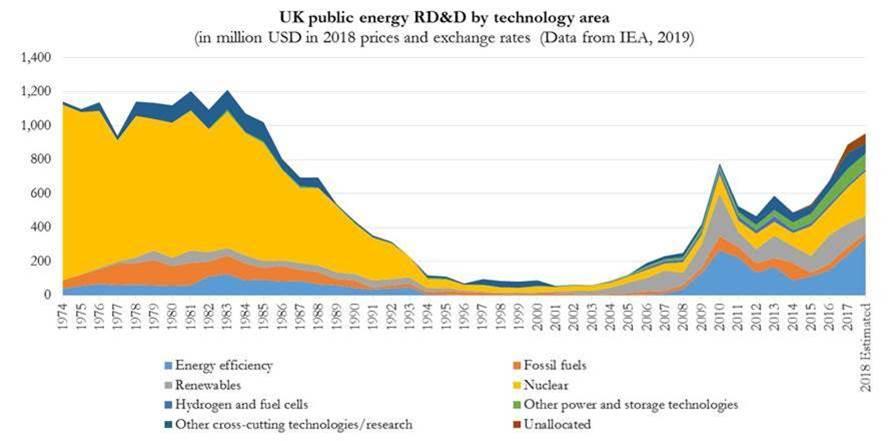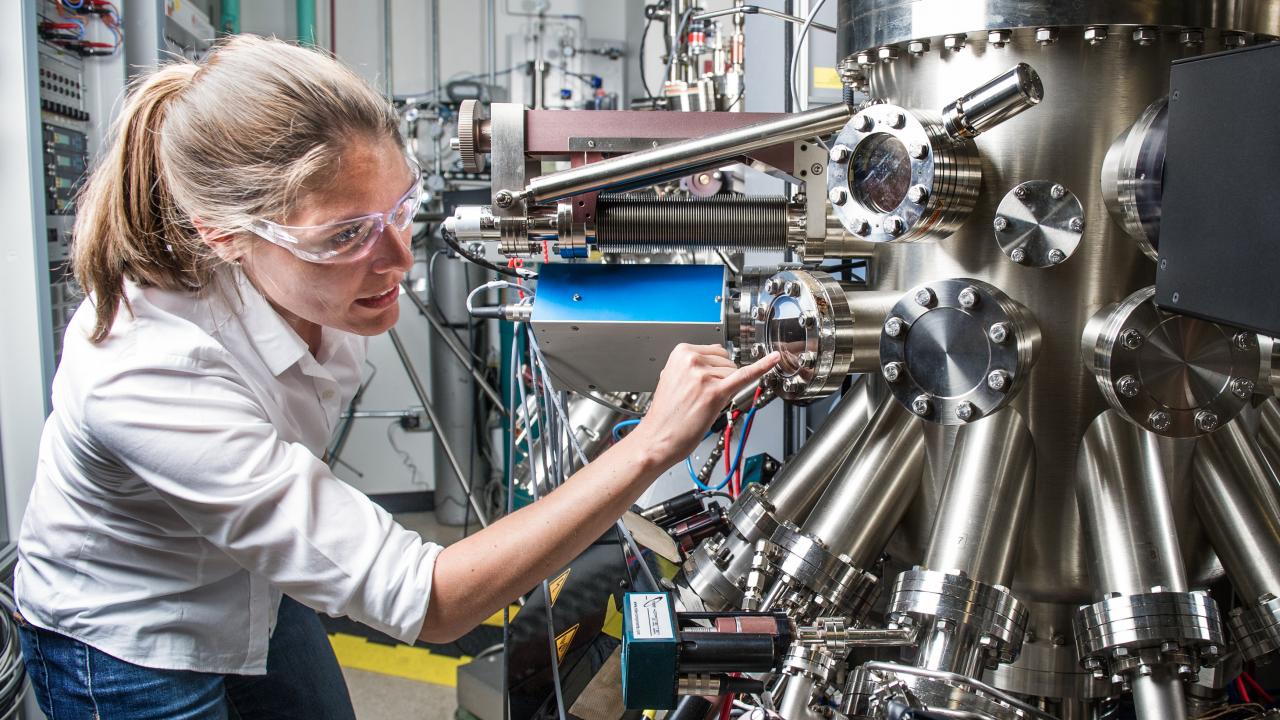The COVID-19 recovery response from the UK government should include increased and well-targeted R&D investments to foster the energy transition and a more sustainable economy.
Public R&D investments are well-known to yield important economic benefits, and most evidence suggests that some of these benefits may be even larger for energy or climate-related R&D. Despite this, at just 1.7% of GDP, the UK currently invests too little in R&D compared to its peers, in terms of both public and private investment. It has a lower R&D intensity compared to the EU28 average while being much lower compared to the USA, South Korea, and Japan. There are many factors underlying the low productivity in the UK; the comparatively low UK R&D intensity is likely to be an important contributor.
Recognising this underinvestment, in 2017 the UK government introduced a target to increase R&D investments to 2.4% of GDP by 2027. Unfortunately, it has not moved nearly fast enough towards this target – with R&D intensity hovering around 1.6 and 1.7% since the early 1990s.
The picture is a little different in the energy area. The UK increased public energy R&D investments from 90 million USD in 2000 to 950 million in 2018, although the levels are still below those of the 1970s and 1980s. Also, it has been willing to develop innovative institutional models to advance energy and climate-related technologies, including the Carbon Trust, the Energy Technologies Institute, the Catapults, the Faraday Institution, etc. Unfortunately, this institutional innovation has been accompanied by significant volatility, with many institutions created and then significantly defunded.

Including a critical energy-transition R&D investment component as part of the COVID-19 recovery presents a unique opportunity to:
-
Build a more productive and resilient economy by addressing the low R&D intensity; and
-
Deliver large benefits to society by concentrating efforts in R&D to enable the energy transition in areas such as energy storage, next generation renewables, buildings, industry, shipping, and aviation, among others.
These are not only economic growth areas, but also areas with the potential to yield additional public health, climate, and broader environmental benefits.
In designing this COVID-19 Recovery R&D component, the UK can build on relatively recent evidence indicating that in the energy space there are examples of public R&D support mechanisms that can advance both innovation and competitiveness. This evidence points to the importance of ramping up funds for R&D, increasing support for R&D in firms (particularly for SMEs), further investing in facilities, trialling a UK version of ARPA-E, and supporting selected demonstration projects to overcome ‘the valley of death’. The UK should build on its own experience of ramping up efforts, but also avoid past volatility.
Compared to other parts of a COVID-19 Recovery package, R&D investments focused on the energy transition should make up a small fraction of the budget. Whilst inexpensive, they are an essential component of any package.
Laura Diaz Anadon is Professor of Climate Change Policy at the University of Cambridge, a Fellow at the Cambridge Centre for Environment, Energy and Natural Resource Governance (C-EENRG) and Research Associate at the Belfer Center for Science and International Affairs at the Harvard Kennedy School. She is a Lead Author in the 6th Assessment Report of the Intergovernmental Panel on Climate Change (IPCC) Working Group III on Climate Change Mitigation and a Member of the Breakthrough Ideas Steering Committee of the Carbon Trust.



